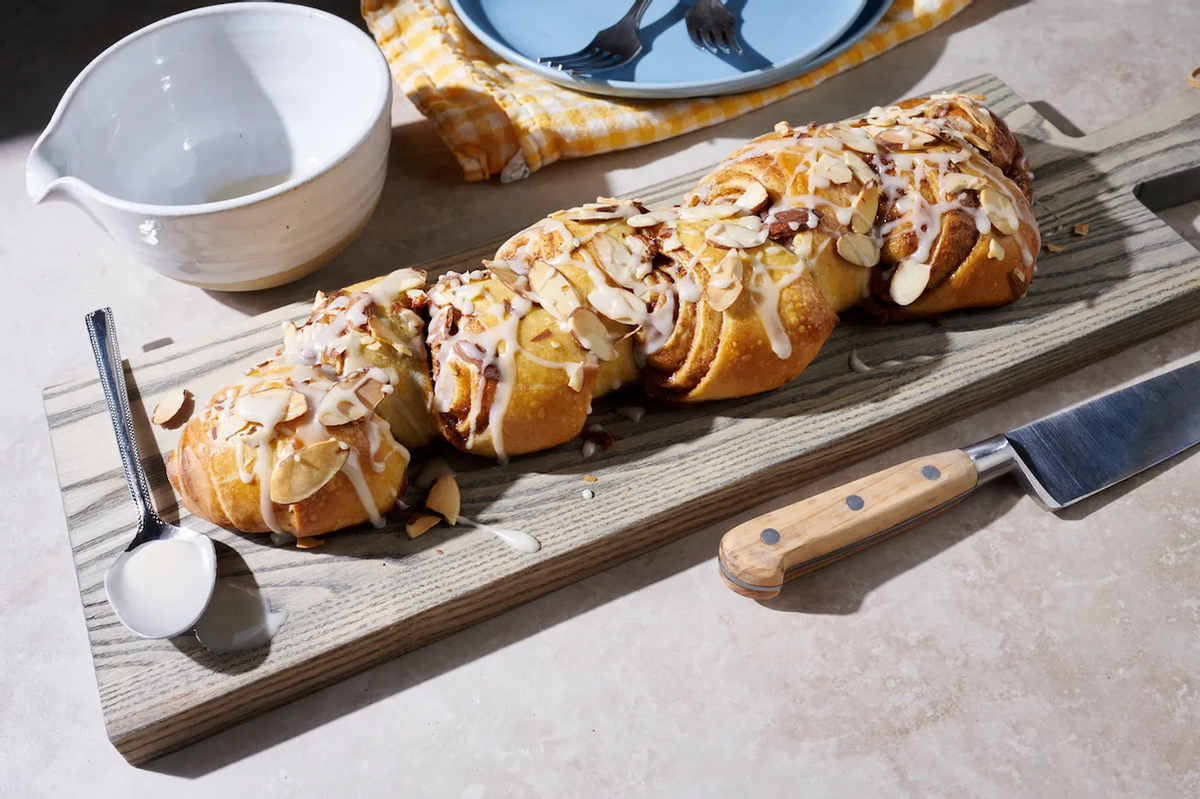The Perfect Loaf is a column from software engineer turned bread expert (and Food52's Resident Bread Baker) Maurizio Leo. Maurizio is here to show us all things naturally leavened, enriched, yeast-risen, you name it—basically, every vehicle to slather a lot of butter on. Today, a sourdough version of Danish kanelstang.
If you've ever baked pain d'épi, which is a classic French baguette made to look like a stalk of wheat, you're familiar with the charm of rolling, snipping, and twisting, yielding a baked good that livens up any dinner table. Instead of scoring the dough with a razor blade and letting it rise straight up, the bread is cut with scissors into alternating petals. The Danish kanelstang (which translates to "cinnamon stick") has the same vibe as the pain d'épi, but just filled with sugar, butter, and warm spices. Think American-style sweet cinnamon roll with fancy French shaping—a mix of flavor and aesthetic that's perfect for a morning or afternoon treat.
Use Your Sourdough Starter
Typically, kanelstang is made with commercial yeast, but in my version, I went with 100 percent natural leavening. With most sweet baked goods, I tend to make a dedicated levain to ensure minimal sourness and ample yeast activity (for more rise). However, in testing, I found this kanelstang tasted fantastic and rose sufficiently well when I simply used my ripe sourdough starter in the mix. And while you could always make a dedicated levain if you'd like (I'd go with 100 percent all-purpose flour and a quick 3- to 5-hour ripening time), it's hard to beat simply waking up in the morning and, with little to no planning, starting a dough and ending up with delicious snack later in the day. Just be sure you use your sourdough starter when it's ripe, meaning it has fermented for some number of hours (for me, that's overnight). At the time you'd typically give it a feeding (refreshment), simply pour off some into your dough mix. From there, feed the starter with fresh flour and water.
Use Alternate Fillings
While I adore a cinnamon-sugar filling, the enriched dough base for my kanelstang would do well to house just about any sweet (or savory, like a Parmesan and ricotta) filling. One of my favorite additions is a pinch of ground cardamom, which brings a special warmth to the filling. In my kanelstang recipe, I'd start with ½ teaspoon of ground cardamom added to the cinnamon filling. Then, if you want more cardamom flavor, add ½ teaspoon of ground cardamom to the flour when mixing the kanelstang dough.
Or perhaps you're drawn to chocolate-filled pastries? For something similar to a chocolate babka filling, I'd start with my cinnamon filling from the kanelstang recipe and add 10 grams of unsweetened cocoa powder. If you want even more chocolate, add in 50 grams of mini semisweet chocolate chips to the filling along with the cocoa powder.
Finally, if you've ever eaten a Danish kringle, you know how wonderful marzipan can be inside of an enriched and baked dough. So again, starting with my cinnamon filling from the kanelstang recipe, add 50 grams of marzipan to the filling and omit the cinnamon.
Use Alternate Toppings
In my sourdough kanelstang recipe, I mix up a typical white icing (a mixture of confectioners' sugar and milk), but this treat could be topped after baking with just about anything you think would sound delicious. I'm thinking melted chocolate, Nutella, an orange-infused cream cheese icing, or even a mixed berry compote. Instead of the sliced almonds, my first choice would be pecan meal for a rich, buttery twist. Another typical Danish topping often seen on a kanelstang or kringle is pearl sugar; when sprinkled on top, it brings an extra punch of sweetness and visual flourish.
Recipe: Sourdough Kanelstang




Shares